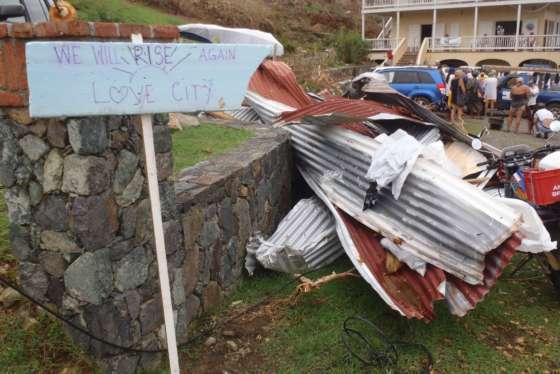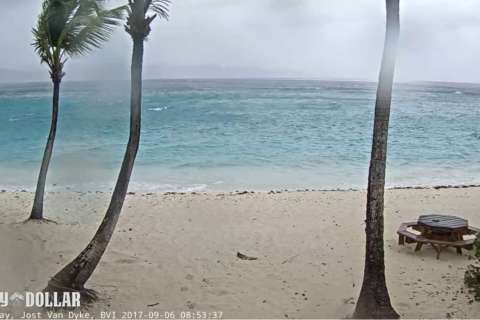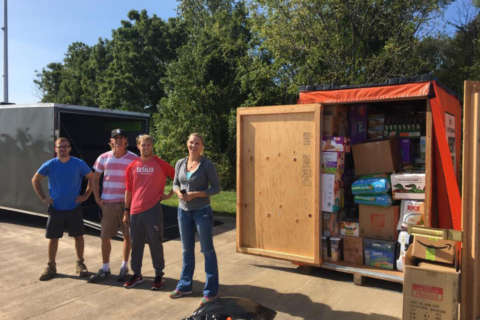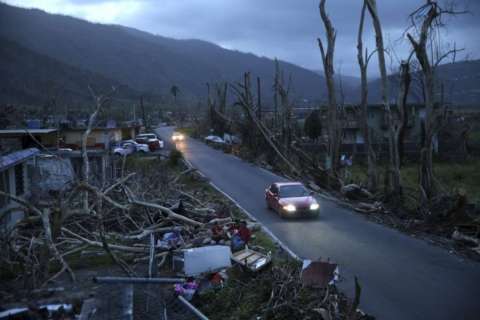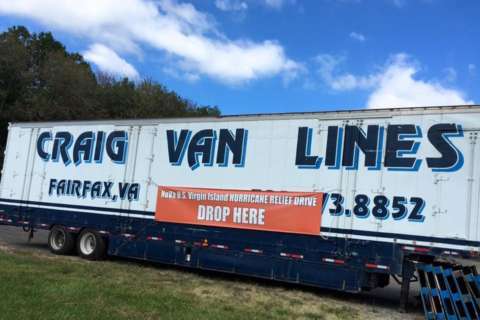WASHINGTON — Less than a month after Hurricane Maria and Irma pummeled the Caribbean, residents and businesses in the U.S. Virgin Islands have only begun picking up the pieces.
But even as beloved bars, restaurants and stores begin to reopen — with reduced hours in part because of a curfew that remains in effect — normal is not a word in many people’s vocabularies.
“There’s no more normal. These were life-changing events,” said John Klein, from the U.S. island of St. Thomas, said of the back-to-back hurricanes that crippled the islands. “Nothing will ever be the same here.”
Klein, who also owns the White Bay Villas and Seaside Cottages on Jost Van Dyke, in the British Virgin Islands, spoke to WTOP Friday via a crackly cellphone. A cellphone tower in the southeast part of St. Thomas where he lives had recently been restored, Klein surmised. “But if I turn my back, I lose the connection,” he said.
Articles in local newspapers indicate the pace of recovery has been slow for some residents of the islands. In interviews with the local Virgin Islands Daily News, residents of Coral Bay, on the East End of the neighboring island of St. John, pleaded for more assistance from the local and federal government.
“The problem is, nobody knows we exist,” one resident said, describing entire hillside neighborhoods reduced to toothpicks.
Klein, on St. Thomas, had a similar perspective.
“We’ve not seen one patrol car or anyone come up this road to check: Is anybody OK?” Klein said. “No one has checked on us. We are OK. But we are still totally on our own.”
President Donald Trump, who is visiting storm-torn Puerto Rico this week, is also expected to meet with the U.S. Virgin Island’s Governor Kenneth Mapp.
Meanwhile, local blogs and social media are keeping track of the slowly improving conditions on the ground. Last week, mail service resumed and the St. Thomas airport reopened. Another sign of return? Despite a curfew that remains in effect and a continued reliance on generators, a number of the island’s former hot spots are slowly opening back up their doors.
The Sundog Cafe at Mongoose Junction reopened last week — with a limited menu and limited hours to accommodate the curfew. Still, for a couple of the hours in the afternoon, residents can grab a mahi taco and a cocktail, proprietor Michael Barry said in a Sept. 25 Facebook post.
“I mean, people still want to be people,” Klein said. “People still want to laugh and have fun and that’s what we’re all trying to do here. We’re trying to enjoy our lives.”
Irma packed powerful winds — as high as 185 miles sustained and gusts even stronger than that.
Then, strong rains from Maria lashed the islands.
“It was like not being a boxer, you getting in the ring with Mike Tyson and spending one round where all he did was beat you. And when you were down, he kept beating you,” Klein said. “You finally crawl to the corner, and as you get to chair and try to sit and see if you’re alive, then his brother comes and kicks you for a couple of hours. That’s what Maria felt like.”
Klein he said he suffered severe damage to practically all of his properties. Even where the structures are still standing, there remains widespread damage: shutters, gutters and roofs blown off, electrical systems destroyed.
The local government has pledged to step up distributing food and other aid, and the Federal Emergency Management Agency is funding contractors to shore up roofs with long-term tarp material, according to local media accounts.
Tourism is the lifeblood of the islands’ economy. The governor has said he hopes to have cruise ships resume their routes to the island as early as this month.
But the timetable for restoring power to all residents isn’t until Christmas. And that may be the best-case scenario.
“Word-of-mouth ranges from ‘everything is fine, and the tourists will be back in a few months!’ to ‘this was the apocalypse and nothing will be OK ever again,'” St. John resident Fiona Russell wrote in a widely shared Sept. 30 Facebook post. “The reality, naturally, is likely in between. Most aspects of St John life are very tenuous at the moment. Island life is always like that to a degree, but this is a new level.”
Here’s how Klein described that new in-between reality. “I turn one way, I see the sea; it’s beautiful. I turn the other way, I see air conditioning units, roofs caved in, cars ruined, beaches with palm trees uprooted, friends’ houses abandoned, piles of rubble and sticks.”
He added, “There’s a price you pay to live in paradise, and we’re paying for it.”
Watch a before and after video of the island of St. John after Hurricane Irma by Nick Dellios.
St. John – Hurricane Irma from Niko Dellios on Vimeo.

